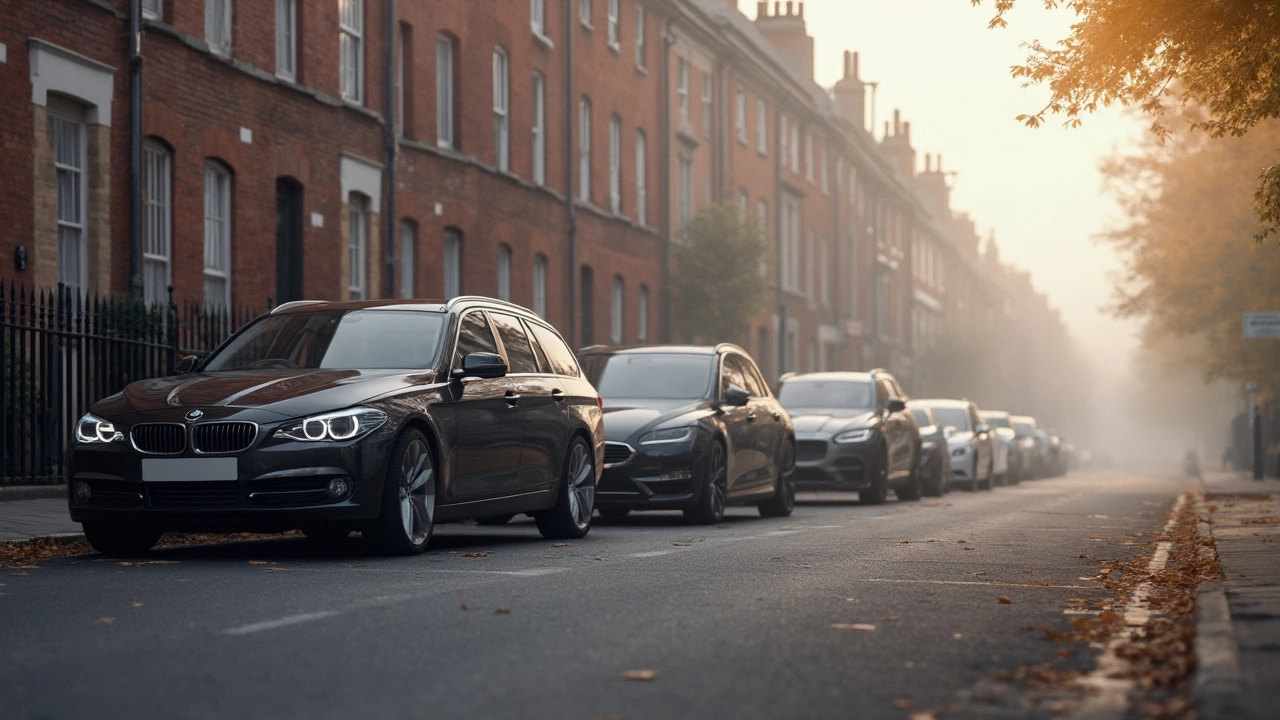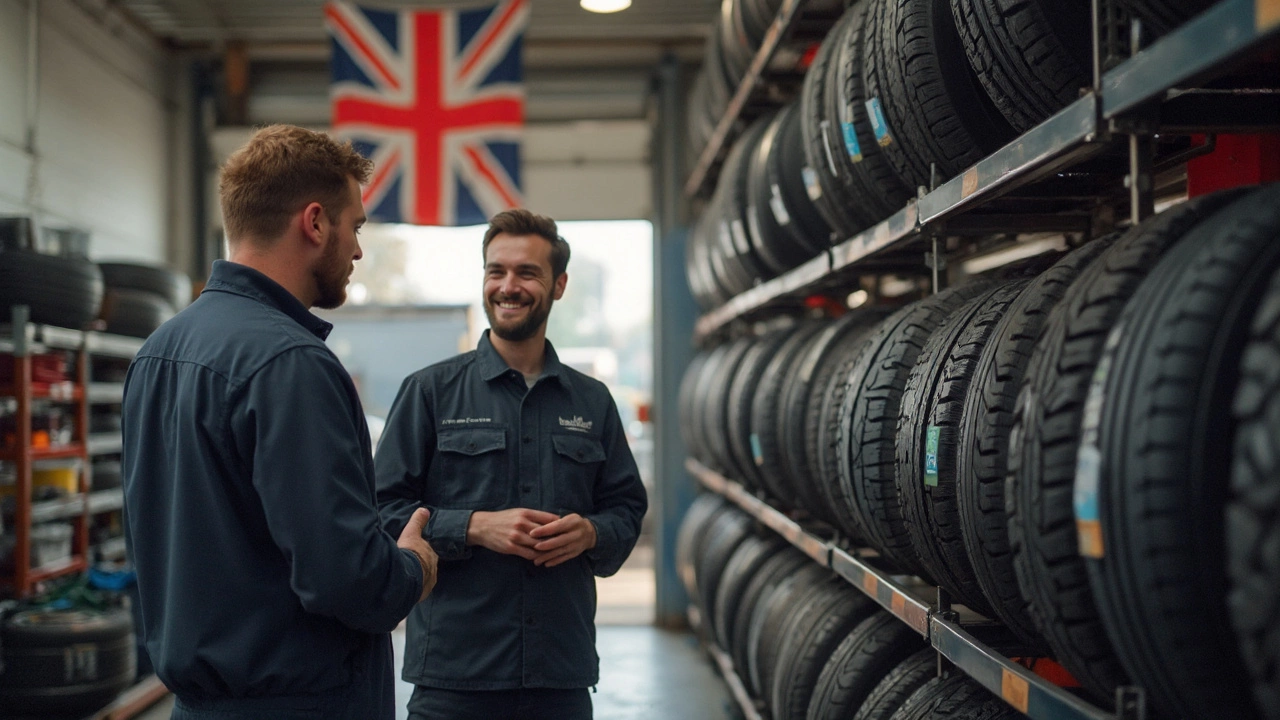Ever had your heart set on a set of cool rims, only to realize your tires matter even more? Tires are your car's only link to the road, and choosing the right brand can seriously boost your safety, your wallet, and the way your car drives.
Not all tires are created equal. Brands like Michelin, Bridgestone, Continental, and Goodyear become top picks for a reason—they invest tons in research, stress test their products on tracks and in the real world, and usually lead the pack for grip, longevity, and wet-weather performance. Picking a lesser-known brand might save you a few bucks up front, but could surprise you with noise, lousy grip, or sudden wear.
Truth is, even the best brand won’t help if you buy the wrong tire for your driving style. Do you rack up highway miles, duck down twisting backroads, or stick mostly to city streets? It pays to match your driving habits to the right tire design and brand.
- Why Tire Brand Really Matters
- The Top Tire Brands in 2025
- How to Choose the Right Tire for Your Needs
- Common Mistakes When Buying Tires
Why Tire Brand Really Matters
If you think tires are just black rubber donuts, think again. The best tire brands pour millions into engineering and testing because a tire’s build quality literally affects how your car hugs the road, stops on a dime, and keeps you out of the ditch on a rainy day.
Brands that have been around for decades—like Michelin, Goodyear, and Bridgestone—aren’t just coasting on their name. Their reputation is built on reliability, safety, and performance that’s been proven again and again. When you go with a trusted car tire brand, you’re getting compounds and treads designed for all sorts of real-life problems: potholes, grease, quick stops, and even that weird winter slush.
Performance isn’t just advertising fluff. For example, a 2024 independent test found that premium brands can stop up to 20 feet shorter on wet pavement compared to off-brand tires at 60 mph. That’s about a crosswalk of extra stopping distance—enough to be the difference between a near-miss and a fender-bender.
| Brand | Average Tread Life (Miles) | Wet Braking Distance (60-0 mph) |
|---|---|---|
| Michelin | 60,000 | 124 ft |
| Budget Brand X | 40,000 | 144 ft |
Choosing a top tire quality manufacturer usually means you get more miles out of your tires, better traction, and consistent ride comfort. While no brand can make a tire last forever, the differences add up over time—especially for folks who rack up the miles.
- Premium brands invest heavily in testing for wet, dry, and snow conditions.
- Known brands often include road hazard warranties or better after-sales support.
- Some insurance companies even link accident rates to tire brand and type.
Bargain tires can be tempting, but using cheaper, unknown options can lead to faster wear, uneven tread, or—or worse—unexpected blowouts. So when you’re staring at a wall of tires at the shop, remember: the brand stamped on the sidewall is your first line of defense out there.
The Top Tire Brands in 2025
If you’re browsing tire shops or scrolling online for the best tire brands, you’ll see a handful of names pop up again and again. These brands don’t just have good marketing—they’ve earned their spots by proving they perform year after year.
- Michelin: This French company constantly tops the charts for all-around performance. Michelin tires are famous for their long tread life, quiet ride, and strong grip in wet or dry weather. If you want peace of mind and don’t mind paying a bit more, Michelin is a safe bet. They’re often standard equipment on luxury cars and EVs like Tesla.
- Bridgestone: Based in Japan, Bridgestone stands out for innovation, especially run-flat technology and eco-friendly tire lines. Their Turanza and Potenza series are solid choices for both family cars and sports sedans. In 2024, Bridgestone rolled out a new line with recycled materials—if you care about the planet, it’s worth a look.
- Continental: Germans take engineering seriously, and Continental tires are proof. These are known for sharp handling, great braking, and advanced safety in both summer and winter tires. If you’re driving lots in unpredictable conditions, Continental is a top pick.
- Goodyear: This American classic brand has a huge range, with all-seasons, off-road, and performance options. The Assurance WeatherReady is popular for families who want a tire that handles rain, snow, and everything in between. Goodyear also scores well for warranty and customer service.
- Pirelli: If you’ve ever watched Formula 1, you already know the name. Pirelli makes sporty, stylish tires, but they also have quality touring and all-season choices. Popular with drivers of sporty sedans and luxury SUVs.
Just to put things in perspective, check out these 2024 customer satisfaction ratings based on over 50,000 U.S. driver reviews:
| Brand | Overall Score (out of 10) | Known For |
|---|---|---|
| Michelin | 8.7 | Long life, safety |
| Bridgestone | 8.5 | Eco options, innovation |
| Continental | 8.4 | Handling, wet grip |
| Goodyear | 8.1 | All-rounder, service |
| Pirelli | 7.9 | Sporty performance |
Don’t forget other solid brands like Yokohama, Hankook, and Falken. They’re closing the gap with the elite five, often at a slightly lower price—making them solid options if you watch your budget but still want quality car tires.
No matter what you drive or how you drive, sticking with proven tire brands cuts out a lot of guesswork. And hey, tires are the only thing between you and the road. Better safe than sorry, right?

How to Choose the Right Tire for Your Needs
Buying the right tires isn’t just about picking a best tire brand—it’s about matching the tire to your car, your driving habits, and even the weather where you live. Sounds complicated? Doesn’t have to be.
Start with the basics. Check your owner’s manual or the sticker on your door jamb. That’ll show the size, load rating, and speed rating your car needs. Get those wrong, and your ride could feel weird or, worse, be unsafe.
- Weather counts: If you live where it snows, go for winter tires in cold months—brands like Bridgestone Blizzak or Michelin X-Ice lead here. No snow but lots of rain? All-season tires from Continental or Goodyear do great with wet roads and changing heat.
- Driving habits: If you’re driving mostly on highways, pick a tire with a high treadwear rating—basically, a tire that holds up mile after mile, like Michelin Defender. City stop-and-go? Prioritize braking and comfort. If you like pushing limits, a summer performance tire (think Pirelli P Zero or Michelin Pilot Sport) does wonders for grip.
- Budget: There’s a sweet spot between rock-bottom and luxury. Sometimes mid-tier brands like General or Kumho give you the best value without crummy performance.
One overlooked factor? Tire noise. Some high-performance tires grip well but get annoyingly loud as they wear down, especially on older roads. If your car’s not the quietest, look for brands and models with good noise ratings—check out reviews or even tire shop charts before you pick.
| Rating | What It Means |
|---|---|
| Treadwear | Higher number = longer lasting |
| Traction (A, AA, B, C) | Higher letter = better wet grip |
| Temperature (A, B, C) | Higher letter = handles heat better |
If you’re not sure, ask someone at a local tire shop. They’ll usually steer you toward what actually works in your neighborhood, not just what the sales chart says.
Common Mistakes When Buying Tires
You’d think grabbing new tires is as easy as matching the size and calling it a day, but that leads to some classic slip-ups. Choosing the wrong ones can cost you money, comfort, and even safety down the road. Let’s sort out the rookie moves to dodge.
- Ignoring Tread Life and Warranty: Some folks get wowed by price tags, then find their tires bald after 25,000 miles. Top tire brands usually come with solid mileage warranties—sometimes 50,000 miles or more. Cheap off-brands? Don’t hold your breath.
- Forgetting Seasonal Needs: Driving year-round on summer rubber in a snowy state is asking for trouble. Even the best car tires lose grip if they’re on the wrong terrain. Match your tires to your climate—winter tires in cold months, summer or all-season when it’s warm.
- Focusing Only on Price: Everybody loves a bargain, but rock-bottom deals are usually no deal at all in the long run. Cheaper tires might wear out fast, get noisy, or mean fewer wet-weather safety features.
- Not Checking the Load and Speed Rating: Every car has specific needs—ignore them, and you risk blowouts or poor handling. Check your car’s manual or the sticker in the driver’s door jamb for the right specs.
- Mixing and Matching Brands or Types: It can mess up your handling and even overwork your car’s traction control. Sticking with one brand and pattern per axle is standard advice from tire shop pros.
Take a look at this quick stat comparison between real tire lifespans and warranties:
| Brand | Average Lifespan (Miles) | Typical Warranty (Miles) |
|---|---|---|
| Michelin | 45,000–85,000 | 50,000–80,000 |
| Goodyear | 50,000–80,000 | 50,000–70,000 |
| Budget (off-brand) | 20,000–35,000 | None–40,000 |
Avoiding these pitfalls means your new tires will last longer, ride smoother, and keep you safer. Skip the guesswork—do a little homework next time you’re tire shopping.

